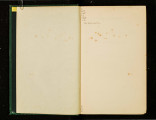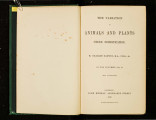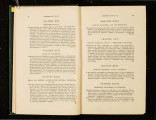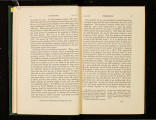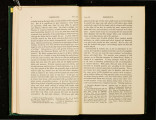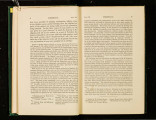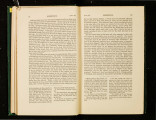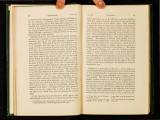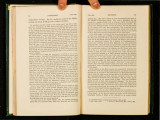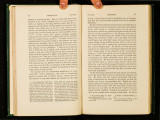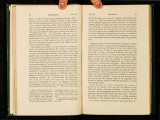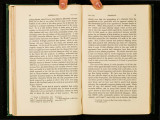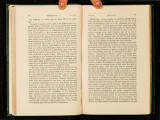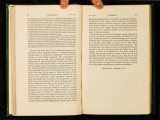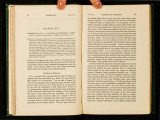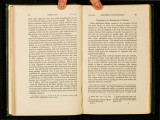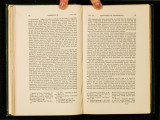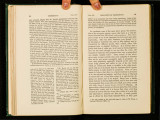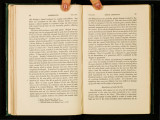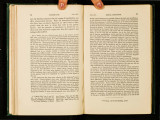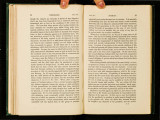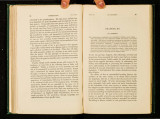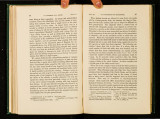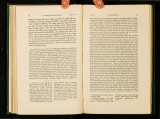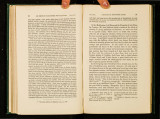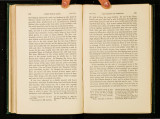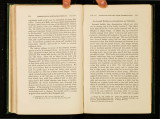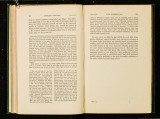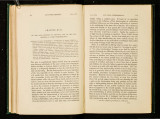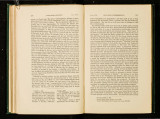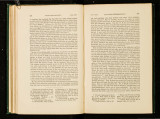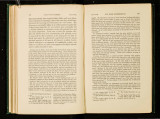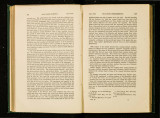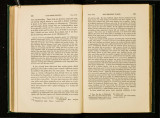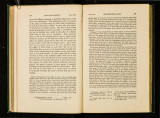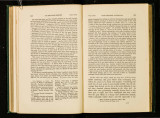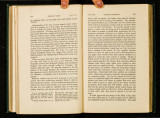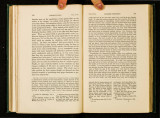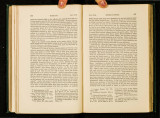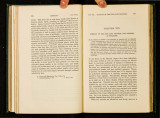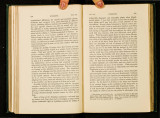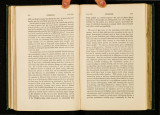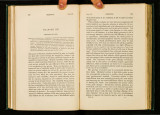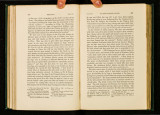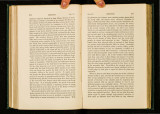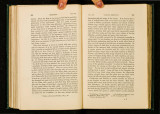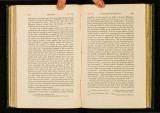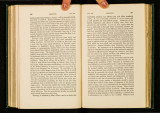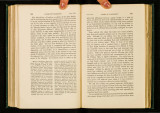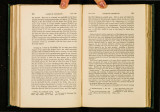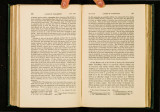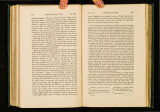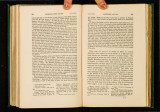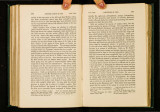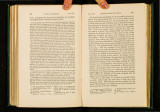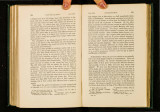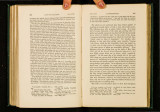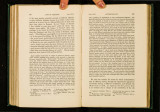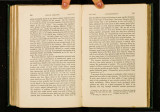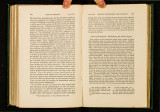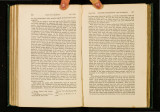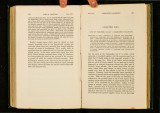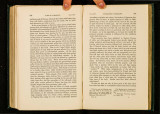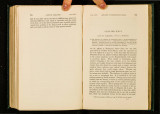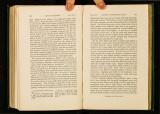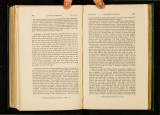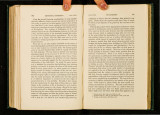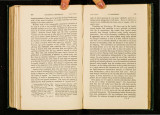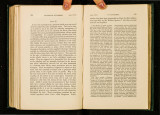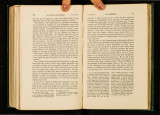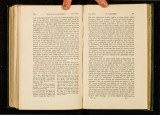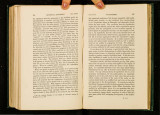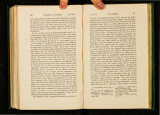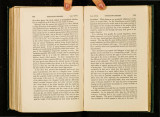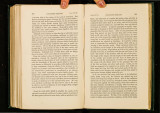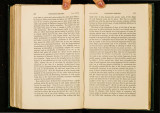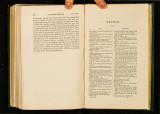| OCR Text |
Show . I 106 CAUSES WHICH CHECK CHAP. XVI. end of his volume. In one instance he gives15 the following details; but I must premise that Gartner, to avoid exaggerating the degree of sterility in his crosses, always compares the rnuximurn number obb.ined from a c1·oss with the average munber naturally given by the pure mother-plant. The white variety of V. lyclmitis, naturally fertilised by its own pollen, gave from an aveTage of twelve capsules ninety-six good seeds in each; whilst twenty flowers fertilised with pollen from the yellow variety of this same species, gave as the maximum only eighty-nino gooJ seed; so that we have the proportion of 1000 to 908, according to Gartner's usual scale. I should have thought it possible that so small a difference in fertility might have been accounted for by tho evil effects of tho necessary castration; but Gartner shows that the white variety of I: l!Jchnitis, when fertilised first by the white variety of V. blutturia, and then by the yellow variety of this sp cios, yielded seed in the proportion of 622 to 438; and in both those cases castration v.-as performed. Now the sterility which results from tbe crossing of the differently coloured varieties of the same species, is fully as great as that which occurs in many cases when distinct species are crossed. Unfortunately Gartner compared tho res·ults of the first unions alone, and not tl1e sterility of the two sots of hybrids produced from tho white variety of V. lychnitis when fertilised by the white and yellow varieties of V. blattat·ia, for it is probable that they would have differed in this respect. Mr. J. Scott has given me the results of a series of experiments on Verbascum, made by him in the Botanic Gardens of Edinburgh. He repeated some of Gartner's experiment:;; on distinct species, but obtained only fluctuating r esults; some confirmatory, but tho greater nlLTJJ.bor contradictory; nevertheless those seem hardly sufficient to overthrow the conclusions anivecl at by Gtirtnor from experiments tried on a much larger scale. In the second place 1\fr. Scott experimented on the relative fertility of unions beiweon similarly and dissimilarly-coloured varieties of tho same species. Thus he fertilised six flowers of the yellow variety of V. lychn it is by its own pollen, and obtained six capsules, and calling, for the sake of having a stamlarcl of comparison, tho average munber of good seed in en.ch one hundred, he found that this same yellow variety, when fertilised hy the white vari ty, yielded from seven capsules an average of ninety-four seed. On the same principle, tho white variety of V. lychnitis by its Oim pollen (from six capsules), and by the pollen of the yellow variety (eight capsules), yielded seed in the proportion of 100 to 82. The yellow variety of 17. thapws by its own pollen (eight capsules), and by that of tho white variety (only two capsules), yielded seed in tho proportion of 100 to 94. Lastly, the white variety of V. blattrt?·iu by its own pollen (eight capsules), and by that of tho yellow variety (five capsules), yielded seed in tho proportion of 100 to 79. So that in every case tho unions of dissimilarlycoloured varieties of tho same species wore less fertile than the unions of similarly-coloured varieties; when all tho cases are grouped together, the difference of fer tility is as 86 to 100. Some additional trials were made, and altogether thirty-six similarly-colourecl unions yielded thirty -five good IS 'Bastarderzeugung,' s. 216. CHAP. XVI. TilE CROSSING OF VARIETIES. 107 capsules; whilst thirty-five dissimilarly-coloured unions yielded only twentysix good capsules. Besides the foregoing experiments, the purple V. phre- 11 iceum was crossed by a rose-coloured and a white variety of the same species; those two varieties wore also crossed together, and these several unions yielded loss seed than V. phreniceum by its own pollen. Hence it follows from 1\fr. Scott's experiments, that in the genus Verbascum the similarly and dissimilarly-coloured varieties of the same species behave, when crossed, like closely allied but distinct species.16 This remarkable fact of tho sexual affinity of similarly-coloured varieties, as observed by Gartner and Mr. Scott, may not be of very rare occurrence; for tho subject has not been attended to by others. Tho following case is worth giving, partly to show how difficult it is to avoid error. Dr. Herbert 17 has remarked that variously-coloured double varieties of the hollyhock (.Altha a TosNt) may be raised with certainty by seed from plants growing close together. I have been informed that nurserymen who raise seed for sale do not separate their plants; accordingly I procured seed of eighteen namecl \arieties ; of those, eleven varieties produced sixty-two plants all perfectly true to their kind; and seven produced forty-nine plants, half of which were true and half false. Ml-. Masters of Canterbury has given me a more striking case; he saved seed from a great bed of twenty-four named varieties planted in closely adjoining rows, and each variety reproduced itself truly with only sometimes a shade of difference in tint. Now in the hollyhock the pollen, which is abundant, is matured and nearly all shed before the stigma of the same flower is ready to recoi'e it; 18 and as boos covered with pollen incessantly fly from plant to plant, it would appear that adjoining \arieties could not escape being crossed. As, however, this does not occur, it appeared to me probable that the pollen IG The following f,wts, given by Ki)lreutcr in his 'Dritte Fortsetzung,' s. 34, 3!), appear at first sight strongly to confirm l\1r. Scott'!:! and Gartner's statements ; and to a certain limited extent they do so. Kolreuter asserts, from innumerable observations, that insects incessantly carry pollen from one species and variety of Verbascum to another ; and I can confirm this assertion; yet he found that the white and yellow varieties of Verbascwn lychnitis often grew wild mingled togeth er : moreover, he cultivated these two varieties in considerable numbers d uriug four years in his garden, and they l;:ept true by seed; but when he crossed them, 1.hcy produced flowers of an intermediate tint. Hence it might h ave been thought that both varieties must have a stronger elective affinity for the pollen of their own variety than for that of the other; this elective affinity, I may add, of each species for its own pollen (Kolrcuter, ' Dritte Forts.,' s. 39, nnd Gartner, • Dastarderz.,' passim) Leing a perfectly well - ascertained power. But t!Jc force of the foregoing facts is much lessened by Gartner's numerous experiments, for, differently from Koheuter, he never once got (' Bastarderz.,' s. 307) an intermediate tint when he crossed the yellow and white flowered varieties of Vcrbascum. So that the fact of the white and yellow varieties keeping true to their colour by sc ~d cloc>s not prove that they were not mutually fertilised by the pollen carried by insects from oue to the other. 17 'Amaryllidacere,' 1837, p. 366. Gartner has made a similar observation. 18 Kolreuter first observcLl this fact. ' l\Iem. de l'Acad. St. P etcr:;burg,' vol. iii. p. 197. See also C. K. Sprengel, • Das Entdeckte Geh eimniss,' s. 345. |




